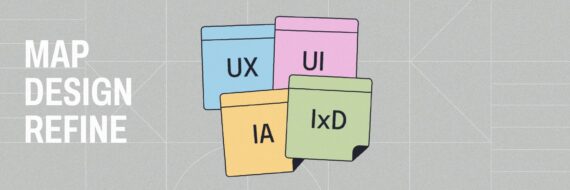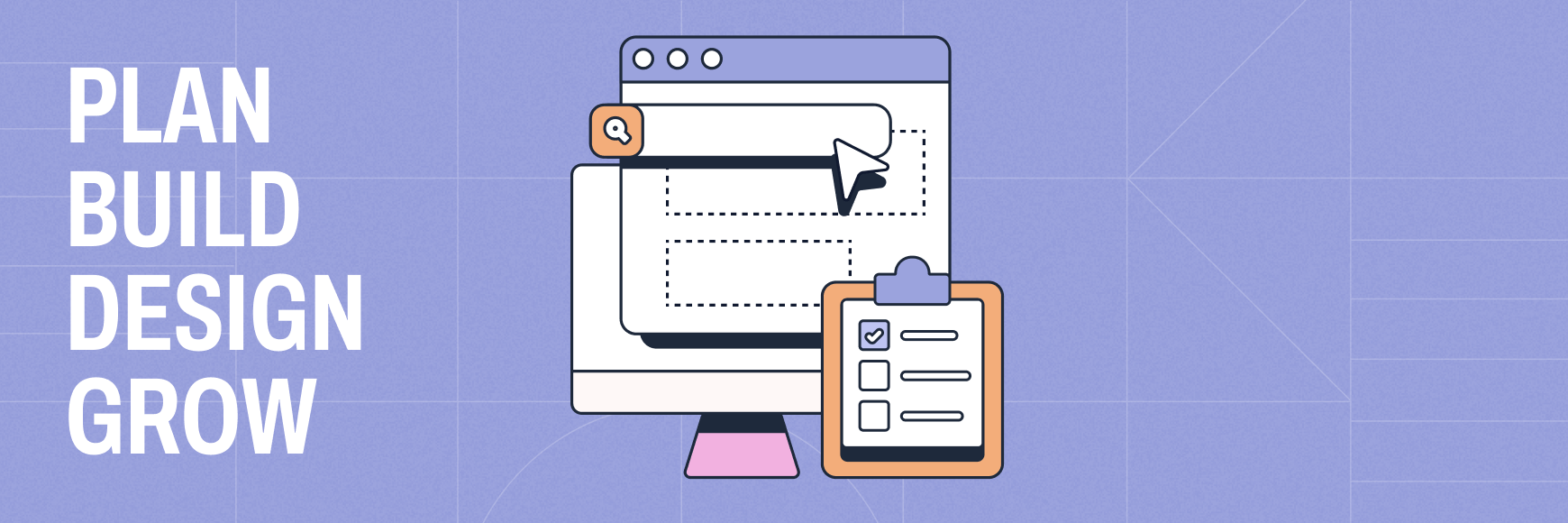As web-based careers continue to grow around the world, there is one career that continues to amp up: Web designers and developers. The Bureau of Labor Statistics estimates a 4% growth in the web design field from 2016 to 2026, which while slower than other career paths, is still on an incline.
If you know web designers, you already know they’re a creative bunch. They see web design as utility first, ensuring each piece they create has a stable function for end users while still meeting the needs of the organization or brand they’re helping to design. However, they also see web design for aesthetics: The placement of shapes, buttons, navigation; the colors and contrasts used that should be easy to read across all devices.
It should come as no surprise that the salaries for these integral roles have been on a steady rise over the last several years. This guide explains the web designer’s work culture and salary ranges in the U.S. The average web designer salary in the U.S. is around $58,517, with entry-level positions starting at approximately $42,000. This guide explains the web designer’s work culture and salary ranges in the U.S. A web design career offers exciting growth potential and flexibility, making it an attractive option for creative individuals.
What does a web designer do?
Web designers create visual concept and experiences for websites, digital marketing, web or mobile applications, and more. Their role is to visually communicate with audiences through the designs they create, often inspiring a conversion from end users.
Web developers, meanwhile, are the individuals who bring the visual design concepts to life through code development, taking the sitemap design for a website and bringing it to life.. These people most often work within a content management system (CMS) to ensure the design doesn’t only look correct but also functions and meets accessibility and user experience needs. In today’s digital marketplace, many web designers are also developers.
Web designer titles
Brian Taylor from digital agency Forix tells us there are many levels and titles for web designers and developers, many which overlap or intersect, and others that may stand on their own, including but not limited to:
- Web Designer
- User Interface (UI) Designer
- User Experience (UX) Designer
- Interaction Designer
- Web Developer
- Front-end Developer
- Web Developer
Seldom is the term "graphic designer" used to describe a web designer, as graphic designers are typically categorized as designers for non-web creative deliverables, like brochures and magazine advertisements.
Where do web designers work?

Most web designers and developers work in offices across the country. While creative marketing agencies are most likely to employ web design teams, many industries hire web designers to help manage the web-facing creative elements, from apps to websites.
But as the tech industries and industries of all sizes have shifted and evolved over the last two decades, many creative employees find their best work comes from working remotely, such as from home.
In a similar vein, web designers and developers often work in freelance settings as their own individual companies, providing web design services to many companies and industries where needed. This gives web designers the freedom to set their own schedules and pay.
Web design skills are crucial in these various work environments. Whether working in an office, remotely, or as a freelancer, having strong web design skills ensures that web designers can create and implement effective website layouts and manage the technical aspects of web design projects.
Web designer workspace needs
Many web designers have varying needs to do their job well. Some may require specific computer operating systems, such as Macintosh or Windows. Others may require a quiet office or personal space to best get their creative juices flowing. Additionally, access to essential web design tools like Adobe Photoshop, Sketch, and Figma is crucial for creating responsive website designs and other graphic design tasks.
In agency settings, web designers or developers often need access to other subject matter experts (SMEs) such as content writers and strategists, fellow web developers, or software engineers.
In a freelance setting, web designers who work from home often have their own home office where they can complete their work and allows them to operate their business to their needs.
🎬 Learn what Slickplan can do!
We filmed a short video to show you exactly how to use Slickplan
Web designer salary: How much do web designers make?
While the state or location of a web designer may dictate some of the salary requirements for web designers because of cost-of-living expenses, the Bureau of Labor Statistics estimates the 2017 median pay of a web designer to be $48,700 per year, equating to approximately $23.41 per hour. The average salary for web designers can vary significantly based on experience levels and geographic location. For instance, an entry level web designer in the U.S. can expect to earn around $40,000 per year, with potential for salary growth as they gain more experience.
Larger U.S. cities where technology is growing rapidly, such as Seattle and San Francisco, have seen higher needs for web designers, but also the need for higher salaries, due to the increased costs for living in such metros.
As the skills evolve and grow for web designers and developers, particularly in office settings, salaries can increase rapidly. According to Payscale.com, web designers who advance their roles to Senior User Experience Designer or a similar senior-level or director-level title can see their salary increase to a median of more than $100,000 per year. Senior web designers typically see a slightly smaller average pay, at around $65,000 per year. Web developer salaries also fluctuate based on geographic location, often paralleling the trends seen in web design salaries.
Freelance web designer rates
Many freelance web designers often have an hourly base pay set for their services, and because freelancing requires the web designer to consider their work hours, availability and turnaround time, the needs and per-hour or per-project pay may change. The potential earnings a web designer makes can vary significantly based on experience, skills, and the strength of their portfolio, making it a financially viable profession.
Web designer, Dana Winslow, offers advice to freelance web designers for setting their hours, schedule, and expectations if charting a path into the freelance career world, including when to advance skills into web development.
How to become a web designer

Many web designers and developers attend a four-year university or college with a specialization or degree focus in graphic design, with some starting their creative careers in high school courses. While some positions may only require an associate degree, having a bachelor’s degree or equivalent experience is often seen as beneficial for job prospects. Statistics show that a significant percentage of web designers hold a bachelor’s degree, suggesting that it can enhance one’s chances in the competitive job market.
Internships are another helpful way for young or amateur designers to learn new skills and many colleges and universities offer internship connections to local businesses or agencies that allow students to shadow professional web designers and developers, as well as provide them hands-on experience in designing for clients and audiences. Another cost effective option is to find a Udemy Instructor who can provide training remotely, or sign up to any one of a number of online learning platforms.
To learn web design, typically the following skills will be most important:
- Design skills and theories
- Know how to use the best prototyping tools
- Essential web design programs, such as Adobe Photoshop and Adobe Illustrator
- HTML, Javascript, CSS, and other code languages
- Search engine optimization (SEO) basics
Mass online open courses (or MOOCs) can also provide extended web design learning experiences that fit full-time work schedules. These courses are available for a multitude of industries, but many courses and certifications are available online and may be paired with accredited colleges and universities.
Conferences and associations
As technology and the needs of web audiences continue to shift, web designers are expected to keep their finger on the pulse of user experience needs as well as changes in design trends. Membership to professional associations can help connect web designers and developers coast-to-coast for sharing ideas and staying up-to-date on the latest changes in graphic design. These associations may include:
- American Institute of Graphic Arts (AIGA)
- Association of African American Web Developers
- Guide of Accessible Web Designers
- Graphic Arts Technical Foundation
- National Association of Photoshop Users
Web designers and developers can also get a great deal of experience and shared knowledge through attendance to local, regional, or national design-related conferences such as:
- An Event Apart
- UX+DEV SUMMIT
- Smashing Conference
- Awwwards Conference
- UX Week
Finding a web design job
Seeking a web design job might start with an internship or connection through an association or conference. But for web designers on their way to seeking a first job or change in career, many web design experts recommend creating a portfolio of their work.
For those new to web design and without professional experience, school-based designs and projects will suffice. As web experiences evolve and expand, adding current examples — with descriptions of what was done, or how it was accomplished — can be especially telling to work ethic and experience.
You could also try boosting your experience with an internship. Companies like Parker Dewey connect college leavers with businesses offering paid ‘micro-internships’, which typically last between 5 — 40 hours.
Check out these tips from Awwwards for how to become a web designer.
At the end of the day though, it will become vitally important to learn how to sell website design as a service. There’s an art to it that you get better at the more you pitch your skills.
Share & refine designs with Slickplan
Add mockups from Figma or your computer to ensure UX/UI is moving in the right direction.
Here’s what top web-designers have to say
We interviewed some of today’s top web-designers to find out their experiences.
Alex Litzow, Design Lead at Sonder Marketing
How did you get into web-design?
Having studied graphic design at university, I found I really enjoyed the few web design subjects I had. Working out how people think and how people interact with the world around them really interests me and UI and UX design really ties into that. So, I applied at a web design agency.
What do you enjoy about the job?
I really enjoy the User Experience side of web design and the challenge of designing something that looks pretty but still works well and is intuitive to use.
What are the biggest challenges?
I find the business side of things most challenging, interacting with clients and time management. I struggle with literacy a little bit so emailing clients is a big challenge, I worry sometimes I sound like a bit of a robot. In university they probably don’ t stress the business side enough or that time is money. So even though you could, you can’t spend 40 hours iterating the design for a few pages of a website. You need to be thoughtful and meaningful with your time so that the design is still effective but doesn’t take a life time to create.
What’s the best way to start a career in web-design?
The best way to kick start a career in web design is to start designing. You can download XD or Invision, both are free, and learn how to use them. The biggest issue with fresh university graduates looking for design jobs is that they have weak understandings of the programs they must use. It doesn’t matter how well you design, it’s pointless if you can’t communicate it with industry-standard programs. I believe you should know how to use these programs before you start university. The best way to learn these programs is to just use them, just design anything. Design your own homepage or try and recreate an existing website’s design. Download these programs and learn them intimately because as a designer they’ll become your life.

Scott Nailon, Director at Sites By Design
How did you get into web-design?
I fell into web design when a ‘web cowboy’ did wrong by a client of mine and I had to fix the problem.
What do you enjoy about the job?
I love being able to give clients results that give their cashflow a massive jump. I love that I can help family businesses become more successful & larger businesses provide more jobs for families!
What are the biggest challenges?
The biggest challenge is re-educating clients who think they already know everything about web. They make poor decisions as a result and end up wasting a lot of money. The end result is high stress and emotional turmoil — which is proven to lead to serious health issues!
What’s the best way to start a career in web-design?
Start by finding someone in the industry to apprentice you. Figure out if you want to be a web designer, developer or a business owner. Each role is extremely different and suited to certain personality types. Once you know what you want to do, learn a bit about the other roles but focus on excellence in your own and plan your career out over the next 5 years.

Frank Talora, Web Designer at Media Heroes
How did you get into web-design?
I delved into Web Design and Marketing because I saw this as an opportunity to develop skills that are driving demand at the heart of the creative world. I was drawn to the idea of becoming a sort of ‘visual architect’ where I could combine creative and tech skills to craft a vision and scope for a website.
Web design is the perfect balance of the artistic and the technical.
What do you enjoy about the job?
One of the best things about working in web design is the variety and scope of projects. These can range from small design changes to massive overhauls that involve an entire team. I enjoy taking these exciting opportunities head-on to test not only my coding and visual design skills, but my problem-solving skills.
What are the biggest challenges?
One of the biggest challenges Web Designers face is accessibility. The type of browser, internet speed, website host and device can all affect how a user experiences the website — all of which are impossible to predict. This pushes designers to think about mobile responsiveness and backwards compatibility for older browsers when designing a website, in order to deliver the best experience for users. A positive user experience is crucial for a successful SEO or Marketing campaign.
What’s the best way to start a career in web-design?
The best way to kickstart a career in Web Design would be to simply start anywhere. Follow your curiosity. Web Design is a catch-all term for a wide variety of different creative and tech-based specialisations, from User Experience and Interface Design, to Web Development.
Becoming a web designer provides you with countless opportunities to acquire new skills along the way, as well as a lucrative ‘jumping-off’ point to refine and branch out a career path across countless areas of expertise.
Once you have a solid grasp on the ins-and-outs of User Experience, interfaces, and HTML and CSS, your best bet would be getting into Front-End Development. You might have imagined that a web designer wouldn’t need to know how to code, but in this technological age of mobile apps and interactive interfaces, it’s necessary. Staying ahead of trends and learning a CMS such as WordPress, or new JavaScript frameworks such as React or Vue, will help you get a huge leg up against the competition and stay ahead of the curve.








 X
X

